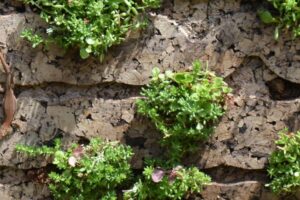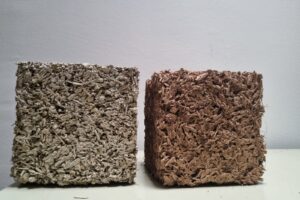
Hydroless: Reducing water consumption in production plants through the use of artificial intelligence and digital twins
October 2, 2025
E-MED: Towards a more efficient and sustainable public transport in the Euro-Mediterranean region
October 9, 202507/10/2025
The company Trace ID and the group Twin Investors, in collaboration with the Textile Technology research group (TECTEX), which is part of the Institute of Textile Research and Industrial Cooperation of Terrassa (INTEXTER) at the Universitat Politècnica de Catalunya - BarcelonaTech (UPC), are developing electronic devices to identify, monitor, and study the traceability of the products in which they are embedded.
In the textile industry, the use of RFID (Radio Frequency Identification) devices is a common practice to control and track products during their manufacturing and commercialisation. However, these systems present significant limitations. At present, RFID tags are incorporated into garments at the end of the production chain, either as a detachable external label or, in more sophisticated versions, as an adhesive placed inside. In both cases, these devices can be easily removed, which hinders both recycling and the traceability of the textile product throughout its life cycle.
In response to this challenge, the INVISITAGS project has been launched with the aim of developing a new generation of UHF-RFID (Ultra High Frequency Radio Frequency Identification) tags that can be integrated into the seams of garments and remain hidden within the final product. These UHF-RFID tags are electronic devices that use radio frequency to identify, monitor and trace the items in which they are embedded. They consist of an integrated circuit that stores information and an antenna that enables communication with the environment through electromagnetic waves.
The goal is for these tags to be integrated in the early stages of the production process, to withstand the demanding conditions of the textile industry, and to allow continuous monitoring throughout the useful life of the product, thereby promoting the reuse and recycling of textile materials. In addition, the project aims to assess the environmental impact of the new tags through an eco-audit and to analyse their economic feasibility within the textile sector.
Budget and Funding
With a budget of €308,294.43, the project started in June 2024 and is expected to conclude in June 2027.
Technology
Topic
You want to know more?
Related Projects
- A research team from the inLab FIB at the Universitat Politècnica de Catalunya - BarcelonaTech (UPC), together with the Asociación de Personas con Movilidad Reducida (AsoPMR), has taken part in the Spot4Dis project to enhance the mobility and autonomy of people with reduced mobility.
- The La Volta project foresees the construction of a large Catalan vault pergola within the Llars Mundet campus, in the Montbau neighbourhood (Horta-Guinardó district). This structure will become a new architectural landmark for Barcelona, combining traditional construction techniques with contemporary innovation. The project involves the Rehabilitation and Architectural Restoration Research Group (REARQ), at the Universitat Politècnica de Catalunya - BarcelonaTech (UPC), and is led by the Architects’ Association of Catalonia (COAC) and the Barcelona Provincial Council.
SATE-VEG: A system for energy renovation of buildings that helps reduce the urban heat island effect
Researchers from the Architecture, Energy and Environment (AiEM) group at the Universitat Politècnica de Catalunya - BarcelonaTech (UPC) have developed SATE-VEG, an external thermal insulation system with a vegetal coating that offers seasonally adaptive thermal behaviour, enhances urban biodiversity and promotes positive health effects. The system is made from organic materials, requires low maintenance and consumes minimal water.- A research team from the Interdisciplinary Group on Building Science and Technology (GICITED) at the Universitat Politècnica de Catalunya – BarcelonaTech (UPC) is leading the BioSAFE project, which aims to develop sustainable building envelopes —mainly façades— designed according to sustainability, comfort and safety criteria, with particular attention to their acoustic behaviour and fire performance.





